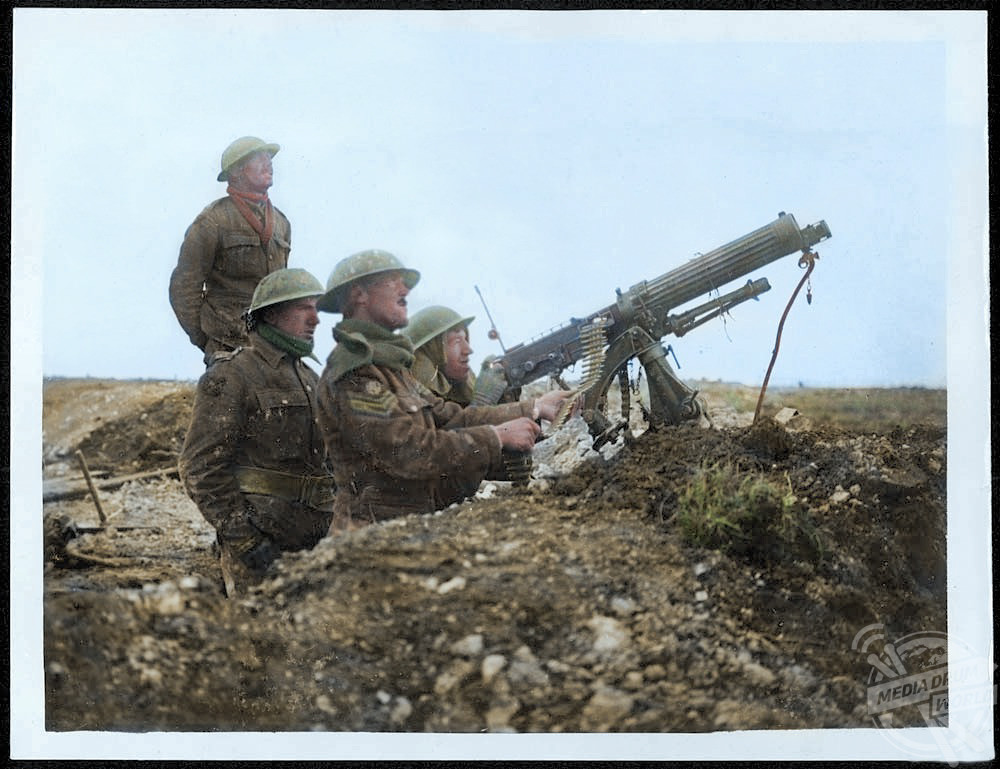By Mark McConville
THE DEVASTATION of World War One has been laid bare in a series of stunning colourised images.
Striking shots show soldiers sitting in a trench at the Battle of the Somme, checking on wounded or possible dead friends among splintered trees and rubble-covered ground, and medics treating other wounded as a shell-shocked soldier looks on with a terrifying grin on his face.
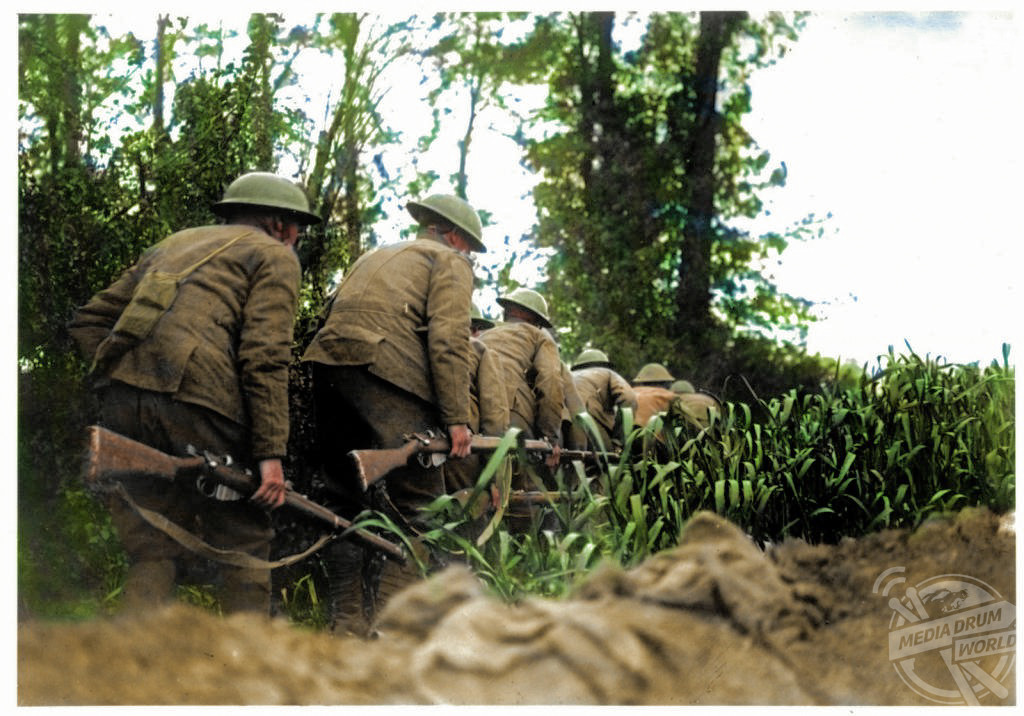
Other pictures show the hard slog of 60lb guns being hauled to the front at the Somme, the Divisional Cyclist Company loading up their bicycles and Canadian machine gun crews taking cover at Vimy Ridge.
The original black and white photographs were painstakingly colourised over a number of months by electrician Royston Leonard (55) from Cardiff, Wales.
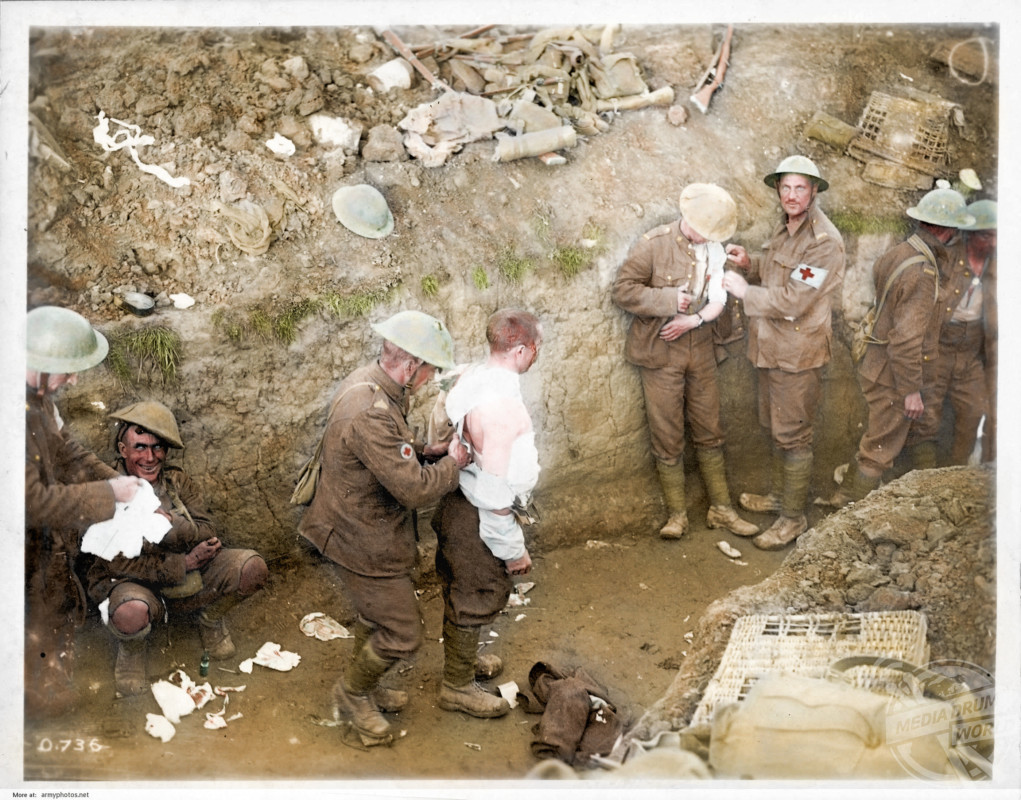
“Some would say that the First World War is when the old world died,” he said.
“From the hell of the battle fields came new ideas, but it is a pity most were about new ways of killing.
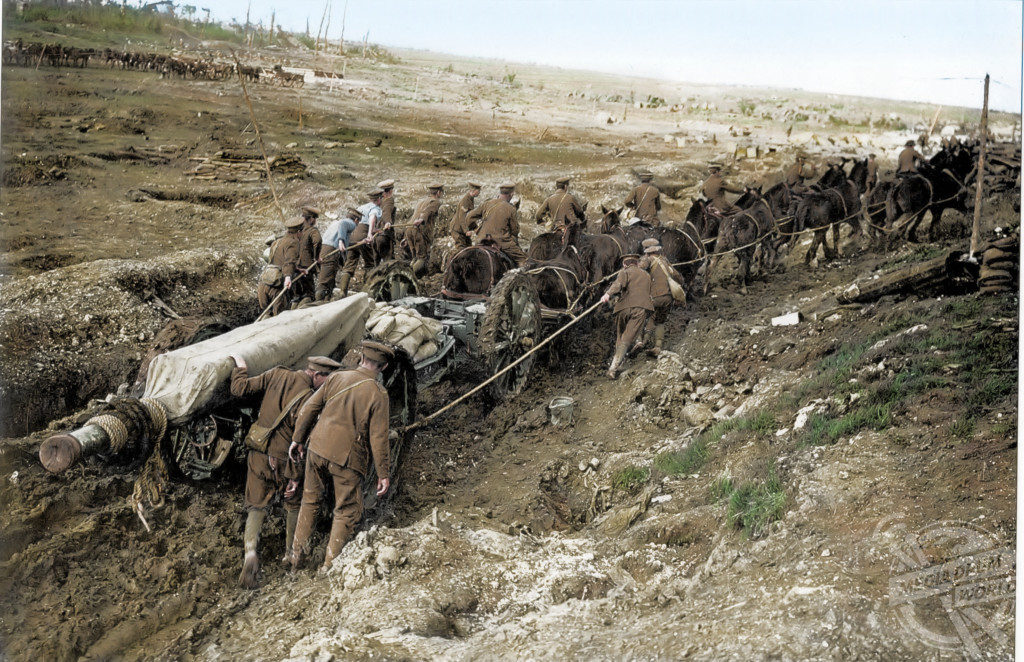
“New machines were made for the air and ground, but also mixed in were new ideas for peace and the way forwards to a better world. It would take another war to learn these lessons and finally bring peace to Europe.
“Even in the middle of hell you can see the hope of better times, but in some images it is just hell – man’s hell made of blood death and steel.
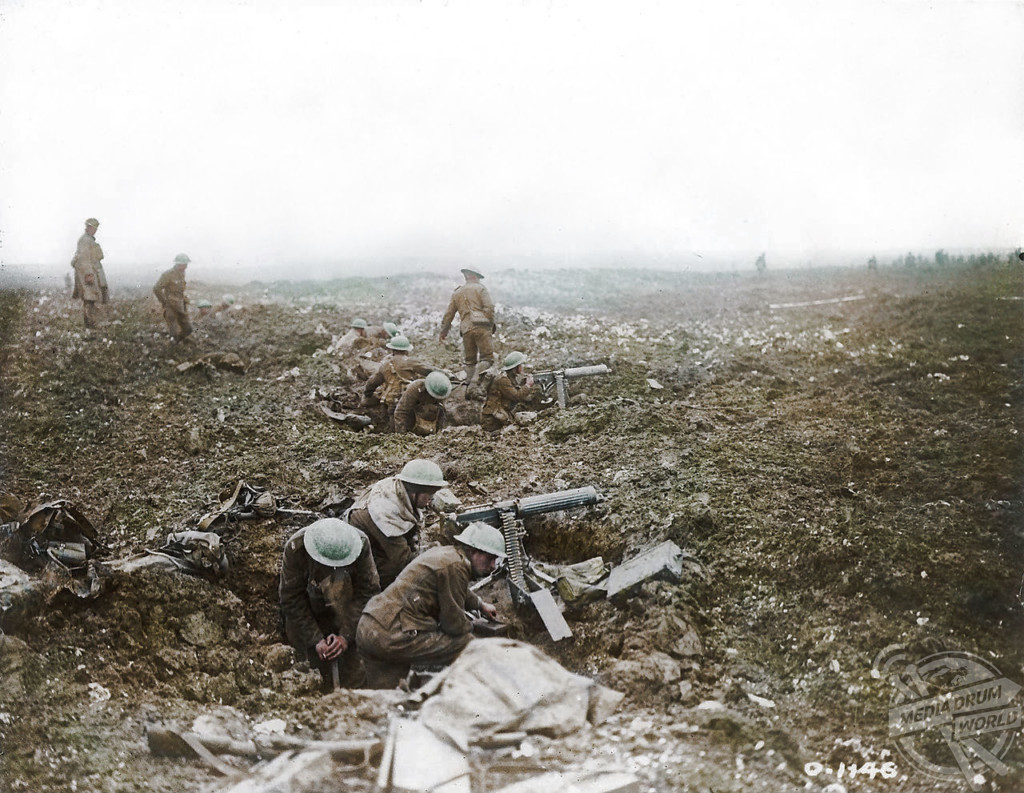
“In the middle of no man’s land grows a flower for we made this hell around it. Sad we forgot until it was too late, but it did not and grew to remind us.”
World War One was a global war originating in Europe that lasted from 28 July 1914 to 11 November 1918. More than 70 million military personnel, including 60 million Europeans, were mobilised in one of the largest wars in history.
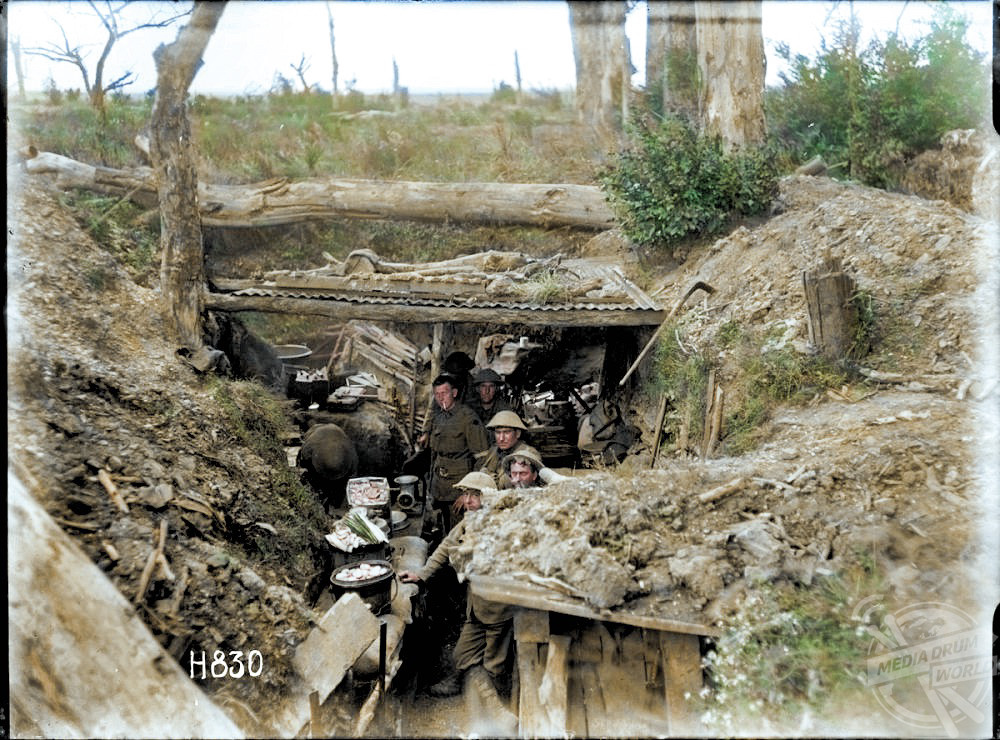
Over nine million combatants and seven million civilians died as a result of the war (including the victims of a number of genocides), a casualty rate exacerbated by the belligerents’ technological and industrial sophistication, and the tactical stalemate caused by gruelling trench warfare.
It was one of the deadliest conflicts in history, and paved the way for major political changes, including revolutions in many of the nations involved. Unresolved rivalries still extant at the end of the conflict contributed to the start of the Second World War only twenty-one years later.

Striking images like these are featured in British author Michael D. Carroll’s new book, Retrographic on the colourisation of historical images. It is available on Amazon now for £16.85.
For more information visit: https://www.amazon.co.uk/Retrographic-Historys-Exciting-Images-Transformed/dp/1908211504

